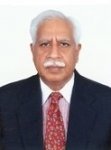India and its Neighbourhood
Modi Sets a Regional Agenda
03 Jun, 2014 · 4490
Jayadev Ranade looks at the strategic implications of according priority to India’s neighbourhood
Elected with a massive popular mandate not seen in the past thirty years, Narendra Modi took a bold foreign policy initiative even before he was sworn in as Prime Minister on 26 May 2014. The initiative did not emanate from the foreign policy mandarins in South Block, but was mooted by advisers of the Prime Minister-designate. In addition to quickly defining the contours of the Modi administration’s policy for India’s neighbourhood, it simultaneously outlined India’s geographic area of immediate strategic interest.
The invitation to the Heads of Government of member nations of the South Asian Association for Regional Cooperation (SAARC) for the swearing-in ceremony of the Indian Prime Minister was an unprecedented out-of-the-box initiative. Myanmar was left out presumably because it is not a member of SAARC, but that relationship needs to be actively nurtured. The initiative immediately sent out a number of messages, the import of which would not have been lost on analysts.
It would have, in the first instance, put officials of India’s Foreign Office on notice that the new Prime Minister will take active interest in foreign policy issues and is ready to engage and communicate directly with other world leaders and the people. They will need to examine many relationships afresh and possibly break new ground. Citing precedence or favouring continuance of old policies in bilateral relationships may no longer suffice. An unmistakable and strong message is that India’s new leaders will accord priority to India’s neighbourhood and pay it particular attention. In the present context this has strategic implications.
By inviting SAARC member-countries, India’s new Prime Minister has indicated that he is keen on promoting regional economic ties and giving bilateral relationships a substantive economic content. The invitation quite strongly suggests that India, as the biggest country with the largest and fastest growing economy in SAARC, is willing to tap the existing economic potential and assist in the development of its neighbours. It offers all these countries an opportunity to join in India’s growth and benefit from its rise.
The impromptu gathering of South Asian leaders effectively delivered a few additional messages. The attendance at the swearing-in ceremony of Pakistan’s Nawaz Sharif and Sri Lanka’s Rajapakse unambiguously clarified that India’s foreign policy would be decided by the Centre and not be held hostage to local political considerations or of state governments. The ruling BJP’s majority in parliament underscores this, while giving New Delhi a high degree of flexibility in crafting foreign policy.
The gathering afforded Modi and his new External Affairs Minister an opportunity, albeit brief, to personally interact with the SAARC leaders and size them up. Indications are that they took the opportunity to sketch out the general contours of their foreign policy and clearly spell out India’s national and security interests. The meetings with the Sri Lankan and Nepalese leaders are said to have been quite frank.
India’s troubled relationship with Pakistan and the vexed issue of Pakistan-sponsored terrorism were catapulted to the forefront with the terrorist attack on the Indian Consulate in Herat in southern Afghanistan. Launched by Hafez Sayed’s Lashkar-e-Tayeba (LeT), the Pakistan-based terrorist outfit trained and financed by the Pakistani Army, the terror strike was launched at 3.40 AM on 22 May, four days prior to Modi’s swearing-in ceremony on 26 May. Providentially the attempt by the LeT’s 4-man terrorist group, which had come well-provisioned for a protracted hostage situation, was frustrated by personnel of the Indo-Tibetan Border Police and failed. By noon the same day Modi, still as Prime Minister-designate, had spoken to India’s Ambassador in Afghanistan, Afghan President Karzai, the concerned persons in Delhi and issued a press statement.
The episode served to yet again highlight Nawaz Sharif’s duplicity and that he had knowledge of the terrorist action. Nawaz Sharif is known to have close ties with the extremist jihadi tanzeems and he and his brother officially allocate funds from the Panjab provincial budget for Hafez Sayed’s Jamaat-ud-Dawaa. Circumstantial evidence also shows both Nawaz Sharif and the Pakistan Foreign Office’s complicity.
Both Nawaz Sharif and the Pakistan Foreign Office delayed confirming the former’s acceptance of Modi’s invitation till news of the failure of the terrorist attack on Herat had been confirmed. The failure of the attack was confirmed by the afternoon of 22 May and the following day Nawaz Sharif’s daughter tweeted that he would attend the ceremonies in Delhi. Some reports claimed that Nawaz Sharif’s son had met the Pakistan Army Chief earlier that day. The Pakistan Foreign Office officially confirmed Nawaz Sharif’s attendance on 24 May. Whatever doubts anyone may have harboured were addressed by Afghan President Karzai in an interview to the Indian national TV channel, Headlines Today, the day prior to Modi’s 50-minute meeting with Nawaz Sharif. Karzai squarely blamed the LeT for the terrorist attack and said this had been independently “confirmed by a Western Intelligence Agency.” By going public with the information on Indian national television, the Afghan President gave Modi an additional basis for a frank talk with Pakistan’s Nawaz Sharif. Reports indicate that India’s security concerns were conveyed to Nawaz Sharif.
In the coming months Modi will engage with more powerful and sophisticated nations, like China. Beijing has separately made amply clear that burgeoning economic ties do not necessarily mean good bilateral relations, which depend entirely on recognition of China’s sovereignty and territorial integrity. India will have to carefully balance economic interests with national security interests with China.


